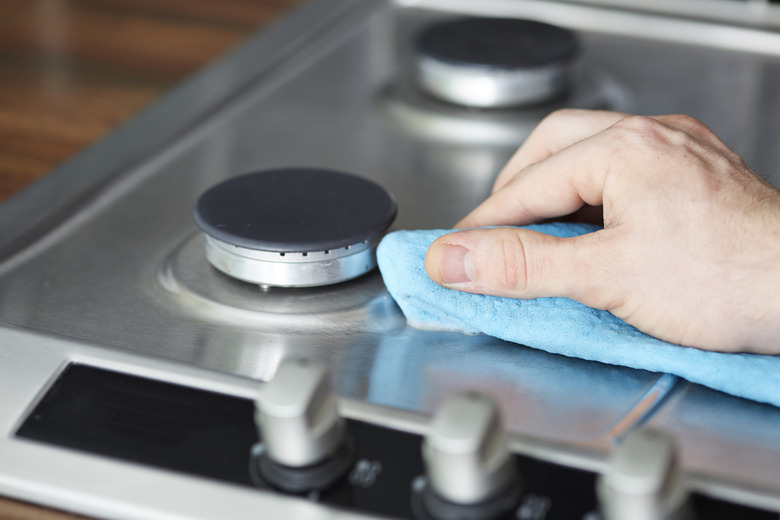How To Get Burned Water Marks Off A Stove
Cleaning a stove is one of the most important things you can do to maintain a clean and effective kitchen. Stove tops tend to be made of either metal or glass. Glass cooktops are popular because they are aesthetically pleasing, but can be challenging to clean due to their delicacy. Fortunately, with the right equipment and tools, it's easy to keep a glass cooktop clean.
Best Way to Clean Glass Top Stove
Best Way to Clean Glass Top Stove
Most glass top stoves are electric. Unlike gas stoves, these stoves don't have a flame that protrudes from the burners. Instead, an electrified portion of the glass heats up to cause the same effects as a burner. Glass cooktops are generally easier to clean because, unlike gas cooktops, they don't require removing grills or racks to clean the burners. Often, the only thing required is to go over the glass surface with a damp, clean cloth.
For heavier soil on a glass cooktop, you'll want to use Windex or a combination of dish soap and water. Wiping gently but firmly in a repetitive way can clear most stains, splotches and spots off of your glass cooktop. When cooking on an electric stove, it can take longer for burners to heat to the desired level. This means that things might boil when you don't expect it, which can lead to spillover from rapid boiling and spots left on your cooktop.
Serious electric stove water damage is rare, but the fact is that boiling water and other substances can do permanent damage to the integrity of your glass cooktop if left untreated. Daily maintenance involves cleaning up spills as soon as they occur in order to keep the cooktop clean and dry and prevent any permanent damage.
White Vinegar and Baking Soda
White Vinegar and Baking Soda
Often when something spills and dries onto the surface of a glass cooktop, it's tempting to scrape it off with a knife or some other sharp kitchen tool. This is especially the case for things like sauces, proteins or soups. However, while scraping something off of a metal cooktop is less of an issue, using a knife to scrape the surface of a glass top stove can lead to scratches and damage to the cooktop surface.
The best thing to do is to soak the affected area in a solution made from white vinegar and water. Allow the solution to penetrate the stain, and then, using hot water and a soft cloth, rub at the affected area. This should loosen any debris clinging to the stove without damaging the surface of the glass cooktop.
Once you have cleaned the cooktop with the white vinegar solution, apply a liberal sprinkling of baking powder to the surface of the stove. Baking powder is a gentle abrasive and is alkaline, which will break down the remaining grime. Then, using a towel saturated with hot water, wipe the surface of the stove with the baking soda. A final pass with white vinegar and a buffing cloth should leave your stove top shiny
Glass Top Stove Cleaner Scraper
Glass Top Stove Cleaner Scraper
Sometimes, even with the most care, there are some bits that cling to the stove top and don't come off with these gentler methods. In these situations, you will likely have to use a glass top stove cleaner scraper.
Instead of using a kitchen knife or a heavy plastic or metal spatula, use a small, sharp razor blade to gently attempt to pick up the corners where any debris or food may be clinging. The sharper the blade and the more gently you use it to scrape off any additional lingering debris, the better your chances of getting the stove perfectly clean with minimal damage to your glass cooktop.
